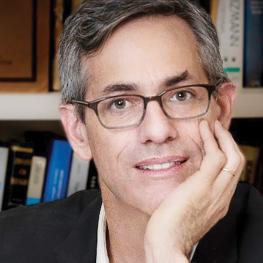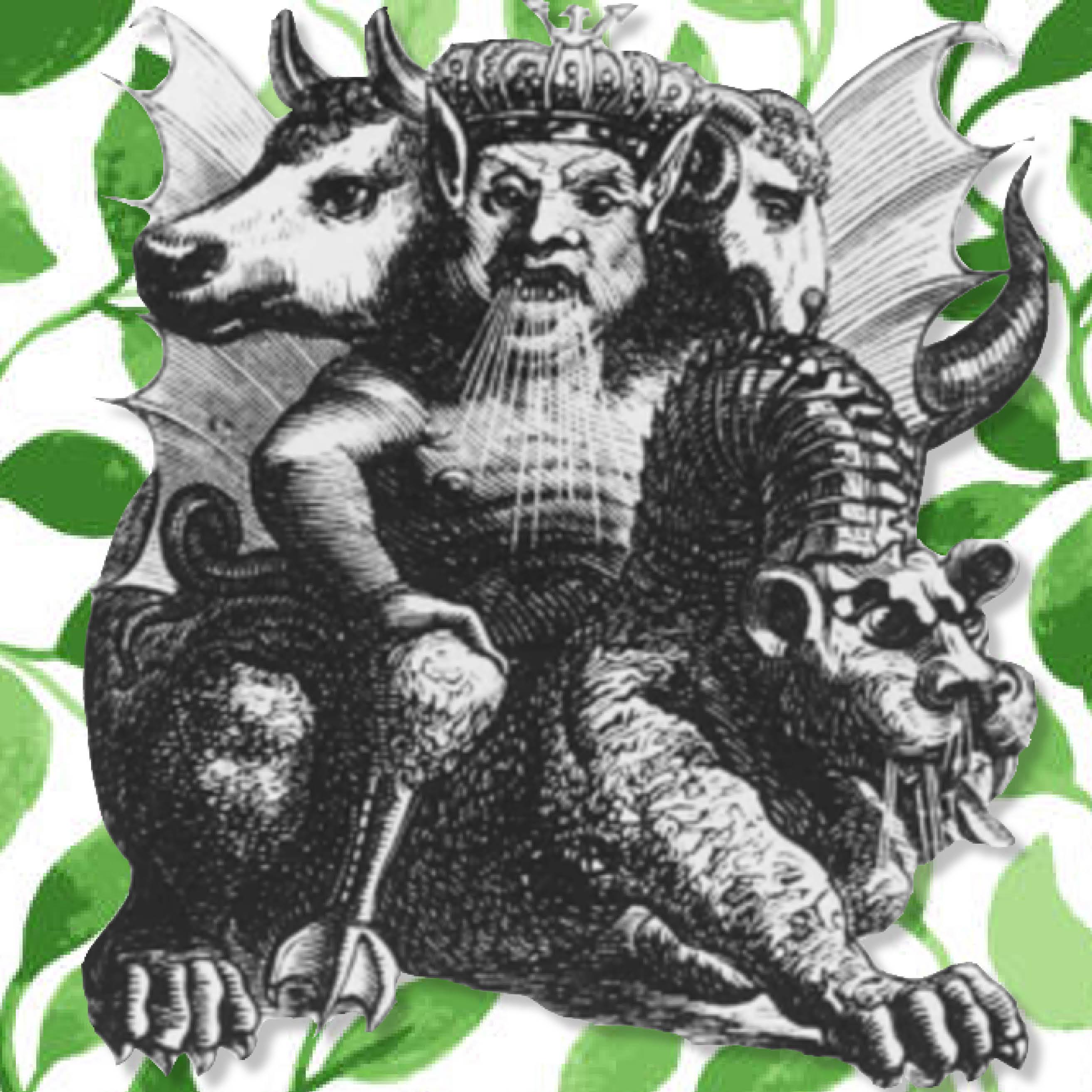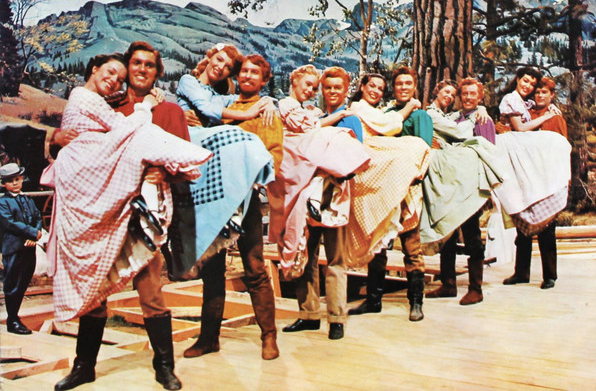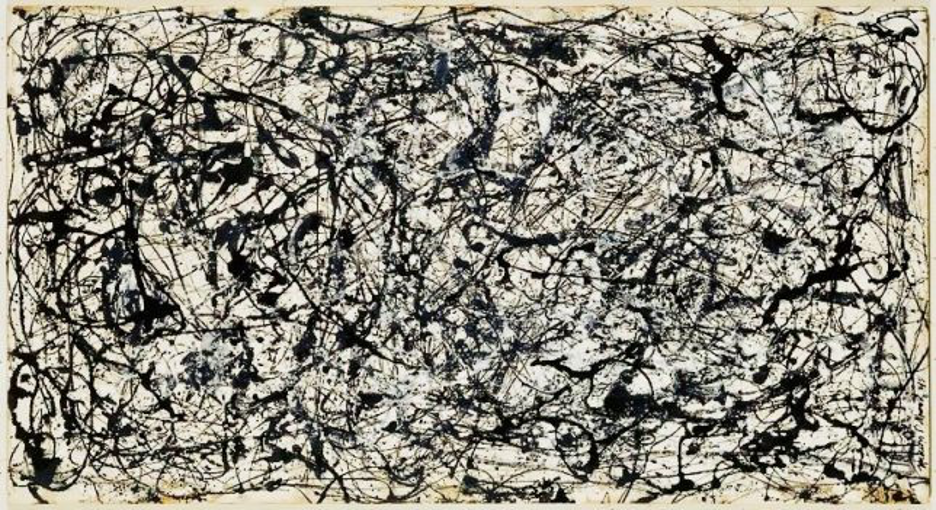The Haredi Moment: An Online Forum, Part 1
The Jewish Quarterly Review convened a forum on recent developments in ultra-Orthodoxy. This first installment features posts by Ayala Fader, Samuel Heilman, and Shaul Magid.

In recent years, Haredi Judaism has become a known entity and even a marketable brand. “Shtisel,” “Unorthodox,” OTD memoirs, and other forms of popular culture have simultaneously demystified and exoticized this form of Orthodox Judaism, transforming it into a media hit and source of intense and often prurient interest.
2020 was an especially prominent year for Haredim. The COVID-19 crisis, together with the U.S. presidential election, featured a much more visible and seemingly defiant public presence by Haredim and, concomitantly, brought an enormous amount of new public attention to them. This moment yielded a different face of Haredi Judaism than the quiet and sequestered enclave society of years past.
How and when did this happen? When did Haredim in the United States abandon their pragmatic transactional politics for a bold, libertarian Trumpism? And both in the U.S. and in Israel, did they did really leave behind their erstwhile medical savvy and commitment to pikuah nefesh (saving a life) for a proud resistance to science?
Complex circumstances lie behind these questions. What seemed to be a dramatic, overnight transformation reflected developments over decades. What seems to the outside world to be a slavish adherence to rabbinic (or even state) authority may actually be a slow-moving decline of the leadership structure of rabbis, hastened by reliance on new media. Above all, what appears to be a separatist community resisting all forms of foreign influence and change is in fact a web of subcommunities that are constantly evolving and inescapably embedded in the societies in which they dwell. In observing this web, it is easy to misread the signs—and easier still to subject Haredim to a gaze of Orientalist fascination.
To help clarify and challenge the assumptions underlying the current moment, JQR has assembled a group of scholars who have spent their careers studying Orthodox Judaism and Haredim in Israel and the United States. Because of the richness of their work, we have opted to divide the forum into three parts. Every week over the course of the next three weeks, we will present three contributions from these scholars—nine in total.
As a whole, the forum offers a set of probing reflections that illuminate both change and continuity in Haredi life, politics, gender dynamics, and attitudes to the wider world; some trace long-term developments, while others focus on more recent breaking trends. The short essays reveal the distinctiveness, diversity, and challenges of Haredi life—and set in place a multidimensional perspective that resists the twin ills of reductionism and exoticism that often attend popular representations.
This first installment features Ayala Fader, Samuel Heilman, and Shaul Magid discussing changes in leadership and notions of authority in the Haredi world, as well as shifting attitudes to and uses of science and technology.
The second segment will feature Netta Barak Corren and Lotem Perry-Hazan, Lea Taragin-Zeller, and Nechumi Yaffe and Shuki Friedman discussing the complex and ever-shifting dynamics between the Haredi community and the state in Israel, as well as the need for a new mode of communications between them.
The third and final episode will feature Orit Avishai, Itamar Ben-Ami, and Joshua Shanes discussing far-reaching changes in self-perception, societal mission, and gender identities in the Haredi world, set against (and at times in tension with) a deeply ingrained political conservatism that extends from liberal to traditionalist ends of the Orthodox spectrum.
Media, Medicine, and Change in the Ultra-Orthodox World Today
Ayala Fader
Contemporary engagement with technology/media and biomedicine reveals broader ultra-Orthodox cultural, religious, and political transformations in the North American landscape. The overwhelming ultra-Orthodox support for Donald Trump, science-suspicion during the pandemic, and what I have called a “crisis of authority”[1] all suggest that ultra-Orthodox Jews are jockeying for a different place at the North American table, one where race, religion, and scientific knowledge are creating new possibilities for national belonging through unexpected alliances.
Since their arrival in the United States after the Holocaust, ultra-Orthodox Jews (Hasidic and Yeshivish) have selectively and successfully adapted new technologies/media and biomedical interventions to support their growing communities, including rabbi-sanctioned compliance with state public health mandates. However, my long-term anthropological research in ultra-Orthodox communities[2] and the work of other anthropologists[3] suggest that something different has been brewing, especially over the past two decades. To understand just what is going on requires analyzing changes in these two key arenas: technology/media and biomedical authority.
Technology/Media: From the 1990s on, different ultra-Orthodox communities endeavored to make the internet “kosher,” much like other new media (cassettes, radio, novels, women’s magazines, etc.) had been rendered kosher earlier through changes in content or form. But by the early 2000s, Ultra-Orthodox Jewish dissenters began to use social media anonymously to find each other, first on the “Jewish Blogosphere” and then later on other platforms.[4] On social media sites, they critiqued, parodied, and mocked what they called “the system,” the structures of rabbinic authority and their affiliated institutions. They also wrote about and discussed their changing sense of themselves in the world and met up in person, secretly creating new relationships and experiences as they explored their changing ideas and feelings. Their activities created what I call a “heretical counterpublic,” which was gendered, as is all of ultra-Orthodox life; women had less access to technology, fewer avenues for dissent, and fewer resources to leave or live as “hidden heretics.” As the heretical counterpublic grew louder, Hasidic and Yeshivish leadership in New York and New Jersey began to join forces to try to control the internet, especially smartphones, which they equated with gentile contamination, the slippery slope of religious doubt, and an existential threat to Jewish survival.
Over the course of this past decade, the internet became a flash point for what I see as a wider crisis of authority: a generational backlash of Hasidic and Yeshivish men in their late twenties, thirties, and early forties, who had become frustrated with the “system” and cynical for a range of reasons. These included a breakdown in rabbinic leadership as conflict over succession exposed all-too-human power struggles; the ongoing sexual abuse scandals, in which rabbis entrusted with protecting children harmed them; the economic challenges of living in New York with limited career opportunities, especially for Hasidic men whose educations might well have precluded attaining fluency in English and basic math; and a growing pushback against rabbinic decrees of religious stringencies as the only way to be Orthodox. As one Hasidic man texted me, “What we’re seeing now in my generation is a rebellion.” Some in this rebellion have changed Ultra-Orthodoxy, for example, living a less stringent but still Ultra-Orthodox life (called “Hasidish Lite” or “Modern Hasidish”) or refusing to prioritize religion over children who leave.
Biomedicine: The crisis of authority around the internet and growing generational dissent has been occurring simultaneously with other ultra-Orthodox Jews’ struggles over a different kind of authority, particularly in their relationship to the state, including public health mandates and science skepticism. All kinds of media—Jewish and non-Jewish, print news, talk radio, and social media—have become sites where these changes are being expressed and debated. Examples include the controversy in New York over metzitzah be-peh (oral suctioning in circumcision ceremonies) beginning in 2004, followed by the measles epidemic in 2018–19, and continuing during the COVID-19 pandemic.[5]
Ultra-Orthodox Jews are not necessarily antiscience. Rather, some ultra-Orthodox Jews are suspicious about certain social and political channels where scientific knowledge is produced and legitimated. Part of the issue may be the imposition by the state or city of particular scientific protocols that come into conflict with the authority of rabbis.
There is evidence that hints at emerging political alliances and shared flows of knowledge among Ultra-Orthodox Jews, Modern Orthodox Jews, and other conservative white Christians. Ultra-Orthodox broadsides (pashkeviln) show rabbinic authorities from March 2020 to November 2020 using discourse (in Yiddish and English) that resonates with others who share conservative social values—for example, suspicion about scientists who gain authority from elite institutions, resistance to state-mandated public health programs, and a commitment to “religious freedom.”[6]
These dynamics prompt me to interrogate the intersection between nonliberal religious alliances around health/illness and processes of racialization. Are ultra-Orthodox Jews striving to become more white and more American through their healthcare choices, understandings of infectious disease, and overall relationship to the state? Gendered identities surely shape these new alliances. For example, ethnographic analysis suggests that it is ultra-Orthodox mothers who, like other antivaxxers in the United States, are at the forefront of vaccine-hesitancy; some are consuming antivaccine literature that has been repackaged for an Orthodox Jewish audience. In contrast, during the 2020 election it was predominantly young ultra-Orthodox men who very publicly demonstrated their support for Trump by taking to city streets armed and engaging in acts associated with the far right, including mask burning.[7]
Changes among the ultra-Orthodox are occurring in the context of rising antisemitic attacks, the Black Lives Matter movement, and the notion that health decisions are a personal choice—part of American religious freedom rather than communal responsibility. Media of many kinds create opportunities for alliance building through shared knowledge flows, while Ultra-Orthodox theologies and temporalities align or counter the implicit theologies and temporalities of the state and of scientific establishments.
A recent article in an Ultra-Orthodox publication warned readers to remember that they were not Republicans or Democrats. They were always only Jews. However, what happens when ultra-Orthodox Jews see new avenues for participation as a “religious” minority rather than drawing on the language of ethnic minority communities and diversity, as they have in the past? Scholarship in the social sciences is investigating how the concept of religious freedom is being mobilized for particular political purposes, including some of those who would go on to storm the Capitol on January 6.[8] Ultra-Orthodox Jews are less often considered in this context both because Jewish scholarship has too often treated them as isolated “enclaves” and because scholars of race, gender, and Christianity have discounted Jewish orthodoxies. The current moment makes the case for investigating how Christian Nationalists, ultra-Orthodox Jews, and Modern Orthodox Jews are building alliances grounded in a shared critique of scientific authority. These dynamics have broader implications for North American notions of citizenship, religion, and race.
Ayala Fader is professor in the Department of Anthropology at Fordham University.
A Revolution in Jewish Ultra-Orthodoxy? The Rise of a New Generation of Leaders
Samuel Heilman
In October of 2020—after the raging COVID-19 pandemic was seeming to slow down in New York, although far less so among the insular so-called “ultra-Orthodox Jews”—something quite unusual happened. In Williamsburg, Brooklyn, in one neighborhood where there is a concentration of such Jews, the notoriously separatist and largest Hasidic sect in America, the Satmars, an Orthodox community activist named Heshy Tischler—not even a Hasid himself—led a group of young followers in an act of civil disobedience. As reported by the JTA and other media outlets, Tischler showed up at Williamsburg’s Middleton Playground with bolt cutters and a cadre of Ultra-Orthodox activists. The precipitating reason was that local playgrounds had been closed for months, presumably to prevent the spread of the virus, which continued to ravage the densely packed Ultra-Orthodox neighborhoods. But because parks in other neighborhoods where the peak of the virus has passed were opening, the large families of Brooklyn’s Orthodox Jewish neighborhoods were frustrated that their playgrounds were not. The people with Tischler knew they were at a disadvantage because videos showing lively playgrounds in other neighborhoods were circulating in Orthodox WhatsApp chats and other places on the internet, and the prospect of a summer without sleepaway camps loomed. Tischler had been at protests calling on the governor to open summer camps for weeks, going so far as calling it “the Heshy Movement.” Now he was taking matters into his own hands. As JTA wrote, “Cheers rose as the lock and chain fell away.” “Come on in, guys,” he said, in his trademark voice as boys in yarmulkes and girls in long dresses milled around him. The next day, local elected officials—State Senator Simcha Felder, State Assemblyman Simcha Eichenstein, City Councilman Kalman Yeger—were standing by Tischler’s side, opening up playground after playground in defiance of the mayor’s orders intended to stop the spread of COVID-19. They even posed on a swing set, Tischler standing behind the city councilman and state assemblyman, ready to give them a push. The brazen act of civil disobedience, amplified by the fact that Tischler himself did not wear a mask, resonated far beyond Brooklyn. Ted Cruz tweeted, “Bravo.”
How did it happen that Jews normally known for shying away from being a public spectacle, who are more interested in punctiliously maintaining their Jewish traditional customs and practices, supporting and defending their parochial values and forms of Jewish education, who are commonly in the good graces of government and the police, which they try to enlist in supporting the autonomy of their institutions and neighborhoods and who almost always submit to the superior authority of their rabbis, a group of normally respected elders to whom even their politicians defer, were suddenly being led by a mob of young activists taking the law in their own hands? What had taken this once seen but barely understood group of people and put them right in the middle of the action, acting in a way that garnered the public approval of a U.S. Senator from Texas?
It went far beyond Tischler and Williamsburg. These Jews became active no less in national politics. In America, in contrast to the great bulk of non-Orthodox Jewish Americans, who remained politically liberal—the ultra-Orthodox were active and outspoken supporters for Trump and the Republicans. In Israel—the other great locus of Ultra-Orthodoxy—these same Jews have taken to supporting and being among the most right-wing, nationalist, and extremist groups. What’s going on?
I believe we are witnessing an extraordinary transformation among many of the most traditional and extreme Orthodox Jews in the last generation, which has led at once to a slide to the political and extremist right, a growing nationalism, and perhaps most strikingly to a change in leadership from a generation of rabbinic elders, whose posture was largely defensive and conservative to young activists who want to take the fight to the other side and be on the offensive. The latter have moved from a desire to simply hold on to their traditions and remain insulated from what many viewed as the cultural threats to their way of life emerging from contemporary secular and humanist society to a willingness to fight back against it and find unexpected allies—from evangelicals to extreme nationalists and Trumpists—who they believed would support and enhance their way of life and values. This is a story of how a group who started out trying defensively to protect their traditions and practices in an environment they believed was often hostile to that way of life developed offensive strategies toward that end and decided that waiting for their often aging leaders whose approach was more deliberative was not enough and became activists, often using the tools of modernity, from the internet to new media and political action, to enhance their ideas and beliefs, Becoming radically changed in the process.
Acutely aware of the attention that their spiraling numbers of COVID-19 infections was drawing, the activists became aware through the Internet, Twitter, WhatsApp, chatrooms and listservs and other groups with whom they came into contact that they had possible allies and common cause with Christian evangelicals and other fundamentalists who were “fighting back,” with conservative and Republican politics in America and extremist right-wing nationalism in Israel, with anti-vaxxer movements (which also allied with the right-wing and with the anti-scientism that already was percolating in Ultra-Orthodoxy—many of whose members had never studied biology). This was exposure and knowledge the old rabbinic leadership elites did not have and were uninterested in knowing about. Political savvy by the activists was also the result and their engagement in such controversies as the local East Ramapo School district conflict and other similar actions in Israel where the Ultra-Orthodox learned how to play street politics and assert themselves in the public square.
The result is that a supposedly insular and nonmodern group is in fact being transformed by contemporary cultural forces way beyond its actual boundaries. Left behind are the old leaders who are still offered respect and deference but are no longer completely in charge. Paradoxically, this drives the new Ultra-Orthodoxy ever more quickly into the modern world, with consequences—both intended and unintended—we will all too soon discover.
Samuel Heilman is Distinguished Professor of Sociology Emeritus, Queens College and Harold M. Proshansky Chair of Jewish Studies Emeritus, The Graduate Center of CUNY.
Do You Believe in Science? Authority, Faith, and American Haredism
Shaul Magid
The Haredim have seemingly become a source of unending fascination for American Jews and non-Jews alike. The film “Unorthodox,” a box-office hit, and the critically acclaimed Netflix series “Shtisel” have each brought the trials and tribulations, and also the charming human dimensions, of Haredi life to a large swath of the non-Haredi (and non-Jewish) world. Alternatively, their reluctance to abide by COVID restrictions and their enthusiastic support of Trump have yielded a darker and more odious picture of Haredim, especially for American Jews. Who are these people who refuse to “believe in science” yet “believe” in the destructive machinations and the inane conspiracy theories of an autocratic president? How are they like “us”? Should we be proud of them or embarrassed by them? Although hypothetical, I suggest that COVID and Haredi Trumpism are inextricably entangled with one another and that we need to understand that when we observe Haredim deflecting the former and embracing the latter.
As a prelude, it is worth noting that there has been long-standing simmering animus between the Haredi world and other segments of the Jewish population in America. Non-Orthodox Jews largely view them as a remnant of an obsolete world who stymie American Jewry’s acculturation project. Excluding Chabad, which occupies a special place in the Haredi world, Haredim have little to do with non-Orthodox Jews, believing them to be “fallen” by having succumbed to the “treif medina” (unkosher state) of America, their future as Jews is seen as limited. Modern Orthodox Jews often view Haredim with respect and yet suspicion, precisely because they offer an alternative case for “authentic” Judaism that rejects Modern Orthodoxy’s synthesis of “Torah u-madah” (Torah and worldly knowledge). Many Modern Orthodox Jews feel both anxious about Haredi superiority in terms of fidelity to Torah and resentful that they are not taken more seriously by them. The Haredi response to Modern Orthodoxy is that it is not that different from non-Orthodoxy, an accusation that cuts to the heart of Modern Orthodoxy’s claim of “authenticity.” Modern Orthodoxy is viewed by Haredim mostly as a weak-tea synthesis of religiosity and secularism, marked by a mostly perfunctory fidelity to halakhah in a postsecular world. Many Haredim maintain that the progeny of many Modern Orthodox will either become Haredi or non-Orthodox. They view the synthetic experiment of “Torah U-Madda” as a failure by design.
This admittedly all-too-brief synopsis is relevant in the following way: I always ask my students to explain the locution “I believe in science.” Belief is a strange word to use in relation to science. What is one “believing” in, exactly? If one would say this belief attests to the truth of empirical evidence of contagion and healing, there is no difference between Haredim and the rest of the world. They accept and experience that as much as others. Haredim are not Jehovah’s Witnesses when it comes to medicine. But the “belief” of which we speak is not “belief” in empirical evidence. In practice, it is primarily a belief in “authority.” We don’t “believe” in science, we “believe” in the authority of the scientist. Anthony Fauci has become a kind of secular rebbe in the age of COVID. We may not like that terminology, but that is how he functions. When he tells us something, we “believe” it. But Haredim also have other rebbes, and other sources of authority they “believe” in. And therein lies the tension.
I do not know that much about the science of medicine. But when doctors say, “you have this ailment and this medication will help,” I “believe” them. This is not because I know they are telling me the truth but because their authority extends beyond my capability to understand. I need to believe them. I may ask for a second opinion or look up studies online by reputable medical authorities, but the second doctor or online study will also be taken seriously because of their authority rather than my “belief” in science more generally.
When the CDC offered strict guidelines for COVID including closing schools, synagogues and churches, and public spaces (parks, etc.) we “believed” them and acted accordingly. For Haredim it was not that simple for two reasons. First, they wanted affirmation from the authority figures they valued most. While this may be true of Modern Orthodoxy to some extent, it is not to the same degree. Modern Orthodox day schools largely decided to close without first receiving permission to do so by their rabbinic authorities. Rabbinic sanction followed, it did not lead. And second, the sacrifices those restrictions would entail among Haredim presented a more serious challenge to them then to many of us. Living with large families in small quarters without television, Netflix, or the capacity for social media, Zoom, etc., posed a severe challenge. In addition, for Haredim, weddings and social gatherings are not only occasions for celebration but are their major form of entertainment as well as their primary forum for constituting community, which could not be easily replicated in isolation. All of this posed grave challenges to the cohesion of their community, and limiting or preventing public Torah study is categorically different from closing schools. Haredim operate with a different set of beliefs and guiding values than most American Jews, Orthodox and non-Orthodox, do. Part of their skepticism emerges when those values come into conflict with the demands, even mandates, secular authorities place on their communities. We may scoff at such an alternative belief system but I suggest we fail to understand the Haredi world and its motivations if we try to do so solely on our terms.
Here is where Haredi Trumpism comes in. There are many reasons for the odd phenomenon of Haredi Trumpism. I want to suggest that one reason may be that Trump affirmed the reticence of Haredim to “believe” in what authorities were telling them about COVID and then, by extension, confirmed doubts many had about other policies in a society where the “woke left” is seen as antisemitic. Trump offered Haredim an authoritative epistemological skepticism that enabled them to deepen their own skepticism toward established authority of any sort outside their own community. Haredi leaders enabled this move by their own inability to separate medical science from politics, and this had disastrous and tragic consequences. And once they recanted and tried to gain control of the community, many in the community had already stopped listening and “believed” in Trump because he confirmed their own ambivalences about the strange admixture of politics and contagion. Trump became a kind of gentile rebbe. One of my Haredi interlocutors compared him to Alexander the Great, another to Cyrus the Great.
If I am correct, this would help explain the enthusiasm for Trump that produced parades with Trump flags marching through Haredi Boro Park, an unprecedented phenomenon. This was not simply support for a political candidate, but support for a source of authority that gave voice to their own ambivalences and fears (not merely grievances) about COVID, immigration, and people of color with whom they live cheek by jowl and fight for precious city and state resources. For them, Trump was not a political figure as much as a cypher for their own skepticism in a world of cultural transition.
What will become of all this? I do not think Haredi Trumpism will continue. Haredi politics has always been transactional and it will remain so, even if Trump provided a counterfactual. However, a few outcomes are possible. First, I think a deeper engagement in American politics may remain, Second, I think Haredi identification with “whiteness” will remain and result in ongoing political alliances with evangelical Christians who share certain concerns. Finally, I think the allegiance to Trumpism was caused by, and also illuminates, a significant transition in Haredi leadership as we witness the end of European-born leaders who wielded the kind of authority American-born leaders do not. It is certainly plausible to suggest that if the Lubavitcher Rebbe or the Satmar Rebbe (Yoel Teitelbaum) were alive, they would have had more control over their communities than present leadership. Time will tell how this will unfold internally. Never before in America, maybe anywhere, have Haredim given such authority to a gentile leader even when his advice countered some of its own leadership. In any case, this era will, in my view, mark an episode in the ongoing Americanization and “whiteness” of the American Haredi world, even as Haredi Trumpism will likely die its natural death. And as a result, similar to Israel, Haredim will become a more powerful, influential, and consequential factor in American Judaism in the twenty-first century. There have been significant and tragic errors in the Haredi world, certainly in regard to COVID but also in falling in line with Trumpism. But in my view these errors are not a sign of their demise, but rather a somewhat odd but tangible sign of their ascendance. Haredim in America have entered the broader political orbit in a new way. They are the fastest growing Jewish community in America. The impact of such new political activism remains to be seen.
Shaul Magid is professor of Jewish studies at Dartmouth College and Kogod Senior Research Fellow at the Shalom Hartman Institute of North America. His new book Meir Kahane: An American Jewish Radical will be published with Princeton University Press in October 2021.
[1] Fader, “The Counterpublic of the J(ewish) Blogosphere: Gendered Language and the Mediation of Doubt,” Journal of the Royal Anthropological Institute 23.4 (2017): 727–47.
[2] Fader, Mitzvah Girls (Princeton, 2009); Hidden Heretics: Jewish Doubt in the Digital Age (Princeton, 2020).
[3] Ginsburg & Rapp, “‘We Are All in the Image of God’: Reproductive Imaginaries and Prenatal Genetic Testing in American Jewish Communities,” Reproductive Biomedicine & Society 11 (2020); Golan & Fehl, “Legitimizing Academic Knowledge in Religious Bounded Communities: Jewish Ultra-Orthodox Students in Israeli Higher Education,” International Journal of Educational Research 102 (2020); Kasstan, Making Bodies Kosher (New York, 2020); Taragin-Zeller, “‘Conceiving God’s Children’: Toward a Flexible Model of Reproductive Decision-Making,” Journal of Medical Anthropology 38.4 (2019).
[4] Fader, “Ultra-Orthodox Jewish Interiority and the Crisis of Faith,” Hau: A Journal of Ethnographic Theory 7.1 (2019).
[5] Avishai, Fader, and Taragin-Zeller, “Why Are Some Ultra-Orthodox Jews Flouting Social Distancing Rules?” New York Daily News, April 8, 2020.
[6] Fader & Berger, Presentation at the Association for Jewish Studies Annual Meeting, 2020
[7] Hanau, “Orthodox Jews in Brooklyn Burn Masks during Massive Protest against New York’s New Covid Rules,” Jewish Telegraph Agency, October 7, 2020.
[8] White & Perry, Taking America Back for God (Oxford, 2020).




